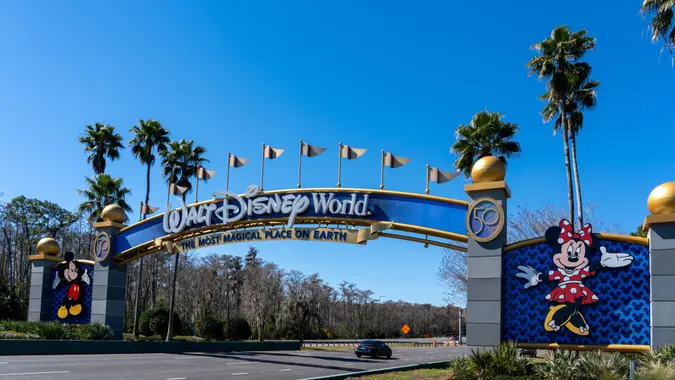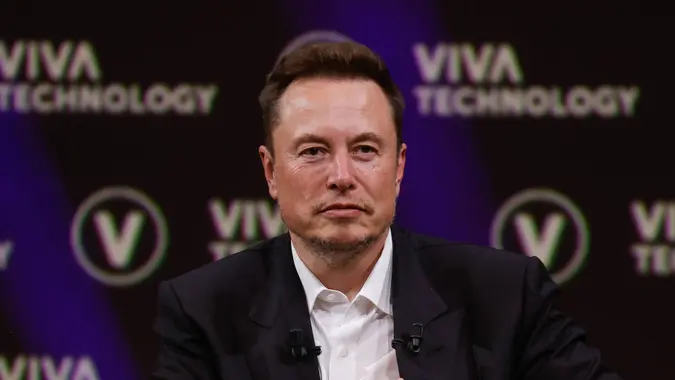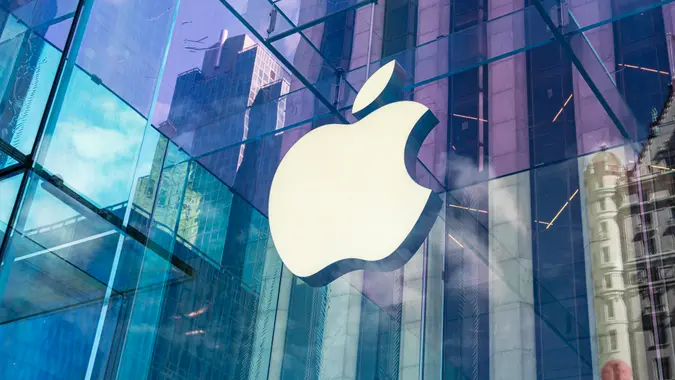If You Invested $1,000 in Microsoft During Trump’s First Presidency, What Would It Be Worth Now?

Commitment to Our Readers
GOBankingRates' editorial team is committed to bringing you unbiased reviews and information. We use data-driven methodologies to evaluate financial products and services - our reviews and ratings are not influenced by advertisers. You can read more about our editorial guidelines and our products and services review methodology.

20 Years
Helping You Live Richer

Reviewed
by Experts

Trusted by
Millions of Readers
When President-elect Donald Trump took the oath of office on Jan. 20, 2017, few could have predicted how well Microsoft (MSFT) stock would perform in the following years.
There are many factors that have contributed to the stock’s success over the years. So how exactly did it perform, and what would an investment then be worth now?
A 568% Gain in Eight Years
Back on Jan. 20, 2017, the stock closed at $62.74 per share, but that same stock skyrocketed to an impressive $418.95 as of the stock market close on Jan. 10, 2025. That’s a return of nearly 568%.
If you had bought $1,000 worth of Microsoft stock on the day of Trump’s inauguration in 2017, that investment would now be worth over $6,677.
How did Microsoft beat even the most optimistic expectations with a 568% return, and how will the stock perform in Trump’s second term? Let’s find out before he takes his second oath of office this January.
How Did Microsoft Achieve a 568% Return?
In the last few years, Microsoft CEO Satya Nadella steered the company toward the twin pillars of modern tech: artificial intelligence (AI) and cloud computing.
In 2018, Microsoft went bold and bought GitHub for $7.5 billion, cementing the ties Microsoft had in the developer space. This purchase and its earlier acquisition of LinkedIn wasn’t simply a corporate shopping spree. They were calculated moves by Microsoft to create a complete technological ecosystem as they continued to pay dividends.
However, the real story was still beginning as the tech giant’s stock inched up.
In 2019, Microsoft endorsed OpenAI, with a $1 billion investment in its AI commitment. It had been focusing on expanding into the AI sector in the years prior to that as well, as reported by The Wall Street Journal.
Its focus on AI bore fruit quickly. Microsoft reached human parity in reading comprehension and machine translation, which could lead to bigger things in future. Plus, ChatGPT’s 2022 launch opened people’s eyes to AI’s potential, and Microsoft was perfectly placed to catch the wave. In 2023, Microsoft announced a $10 billion investment in OpenAI, and in 2025, its AI business is projected to reach $10 billion in annual revenue.
The COVID-19 pandemic was very much so devastating on a global scale but was an unexpected catalyst for Microsoft’s growth. Microsoft’s suite of productivity tools — including Teams, Office 365 and Azure — quickly became indispensable as businesses the world over shifted to remote work. This made the subscription model for Office 365 a huge success. Likewise, Azure and other cloud services saw 33% revenue growth in the first quarter of its fiscal 2025.
The Numbers Tell the Story
Microsoft’s financial performance is a real treat. During the first quarter of its fiscal 2025, it saw revenues of $65.6 billion, up 16% year over year. In the Microsoft Cloud segment alone, it saw $38.9 billion in revenue, which was a tremendous 22% year-over-year gain.
Microsoft faced a 28.02% drop during the market turmoil of 2022, but it had a strong recovery, with a 58.19% increase in 2023, per FinanceCharts. This volatility highlights that even tech giants can be affected by market changes, emphasizing the unpredictability of the financial landscape.
Looking Ahead at Trump’s Tech-Friendly Policies
Tech companies greatly benefited from Trump’s first term. The S&P 500 went up 67% during his term. Tax cuts and deregulation set up a good foundation for innovation and growth, which benefited especially U.S. tech giants such as Microsoft.
With Trump about ready to be back in his second term, he’s discussed plans to undo President Biden’s AI policies. He could scrap Biden’s AI safety guardrails and will likely approach AI more favorably. This stance could spur AI development for Microsoft, which intends to invest $80 billion in AI data centers throughout its 2025 fiscal year.
Trump’s “America first” strategy — which includes the possibility of Chinese goods slapped with tariffs — could indirectly help U.S.-based tech companies. But there are pitfalls to his approach as well. His criticism of Biden’s CHIPS Act and his desire for tariffs may remake the semiconductor landscape. It could affect how the U.S. would compete with China on this important front.
It’s not certain exactly what a $1,000 investment in Microsoft during Trump’s second term will yield in the coming years. But considering what Microsoft was able to achieve in Trump’s first term, its performance during Trump’s second term will be watched closely — especially by investors interested in potential changes in policies that could impact the tech sector.
Editor’s note on political coverage: GOBankingRates is nonpartisan and strives to cover all aspects of the economy objectively and present balanced reports on politically focused finance stories. You can find more coverage of this topic on GOBankingRates.com.
 Written by
Written by  Edited by
Edited by 
























